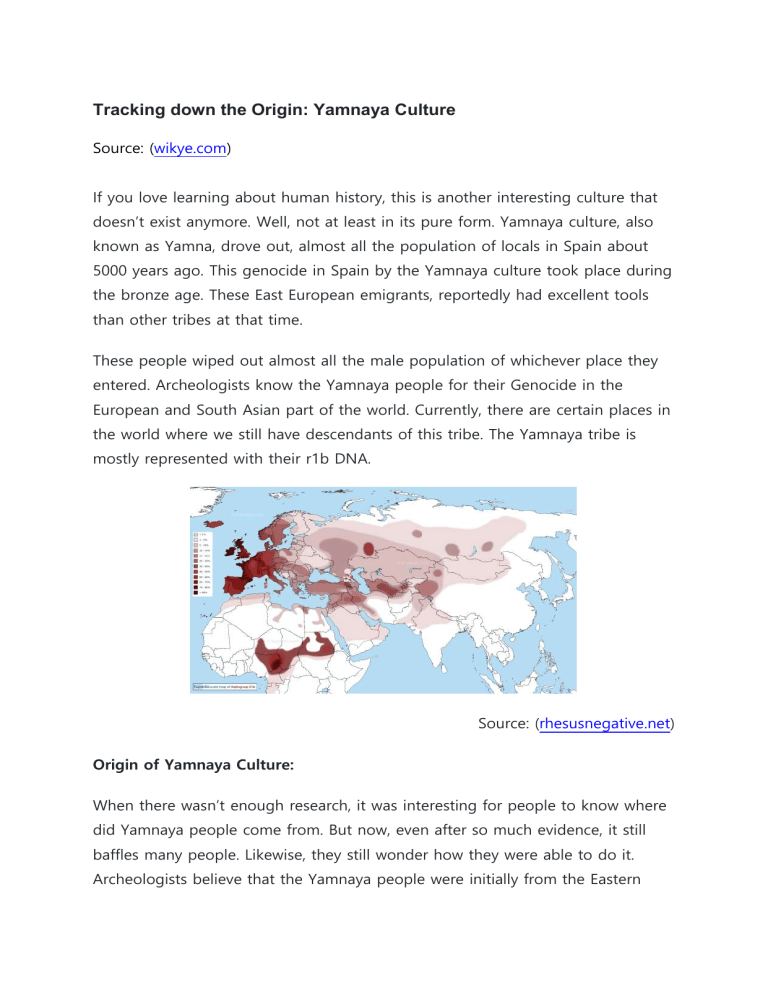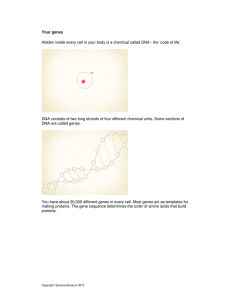
Tracking down the Origin: Yamnaya Culture Source: (wikye.com) If you love learning about human history, this is another interesting culture that doesn’t exist anymore. Well, not at least in its pure form. Yamnaya culture, also known as Yamna, drove out, almost all the population of locals in Spain about 5000 years ago. This genocide in Spain by the Yamnaya culture took place during the bronze age. These East European emigrants, reportedly had excellent tools than other tribes at that time. These people wiped out almost all the male population of whichever place they entered. Archeologists know the Yamnaya people for their Genocide in the European and South Asian part of the world. Currently, there are certain places in the world where we still have descendants of this tribe. The Yamnaya tribe is mostly represented with their r1b DNA. Source: (rhesusnegative.net) Origin of Yamnaya Culture: When there wasn’t enough research, it was interesting for people to know where did Yamnaya people come from. But now, even after so much evidence, it still baffles many people. Likewise, they still wonder how they were able to do it. Archeologists believe that the Yamnaya people were initially from the Eastern European Part of the world. They started to migrate to other parts of the world around 5000 years before. The group then expanded around the world like no other culture. They had domesticated horses, which at that time was not heard of in other parts of the world. Yamnaya Culture tribe was able to completely wipe out the male population in Spain with their tools and newly invented wheels. Most of the European people today are primarily related to this culture. Source: (rhesusnegative.net) The Yamnaya Culture Genetics: At present, historians have understood that most of the European population at present consists of the genes of the Yamnaya people. The genetic components of the people were found out through DNA research by Haak et al. As per this researches, the people from Yamnaya culture were tall with dark hair and moderately light-colored skin. One of the primary reasons why they were so successful in defeating people from other regions could also be due to their physical stature. Now among many Europeans, the most common DNA found is Haplogroup r1b. This DNA is the same as the ancient Yamnayan genes. Source: (rhesusnegative.net) Yamnaya Culture Migrating from the east map: From their homeland in the Western part of steppe, the Yamnaya culture spread to all the adjoining areas. They landed in the Eastern part of India to the Central part of Europe. Moreover, they dominated most of the Indian and the European region. As a result, the group of people we know as Indo-European people settled all over the region. Their current population: The Yamnaya Culture people have migrated to places in the European and South Asian region. The most recent group of Yamnaya people were called the ProtoIndo-European people. Additionally, these people have a common linguistic origin, which is the Proto-Indo-European Language. Major languages like Spanish, English, Hindi, Portuguese, Persian, Russian, German, reportedly are all descended from the mother language. Unlike other undecipherable cryptic texts, we can trace back the origins of these languages. So, we can trace the current population in these language-speaking areas: Central and South Asia: The North-Western Indian and Pakistani population is one of the largest carriers of Yamnaya culture ancestry. Other areas of Asia, like Kazakhstan and Tuva, are the best example of this group of people. Today among the modern Indians, much of the higher caste people are believed to be the descendants of the Yamnaya people. Similarly, the Pashtuns also seem to have a great lineage to this culture. Eastern Europe: As per the research by Jones et al. (2017), they found that the majority of the population in Eastern Europe carry Yamnayan genetics. 46.8% of the Russian people have Yamnaya genes in them compared to Ukrainians, who have 42.8%. Finland: Among all these groups of descendants, Finland has the highest percentage of Yamnayan genes. Almost half of the population in Finland (50.2%) have Yamnaya contributions in them. Western Europe: There have been varying degrees of Yamnaya DNA found among the European people. Some of the places have a high amount of Yamnaya gene contributions. Surprisingly, in research, it was found that more than 70% of the genes found in skeletons in Germany were from Yamnaya Culture.



